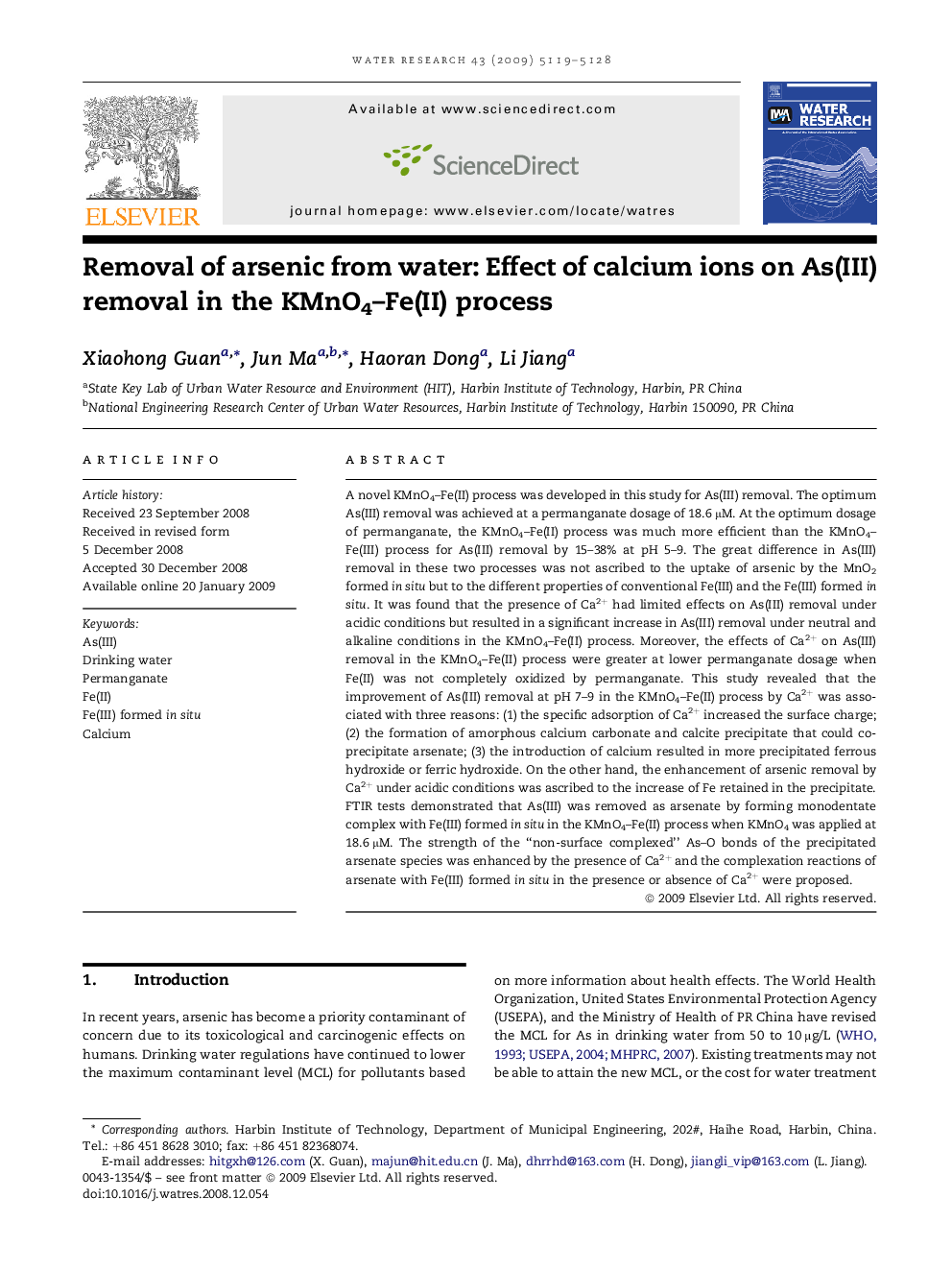| کد مقاله | کد نشریه | سال انتشار | مقاله انگلیسی | نسخه تمام متن |
|---|---|---|---|---|
| 4485376 | 1316950 | 2009 | 10 صفحه PDF | دانلود رایگان |

A novel KMnO4–Fe(II) process was developed in this study for As(III) removal. The optimum As(III) removal was achieved at a permanganate dosage of 18.6 μM. At the optimum dosage of permanganate, the KMnO4–Fe(II) process was much more efficient than the KMnO4–Fe(III) process for As(III) removal by 15–38% at pH 5–9. The great difference in As(III) removal in these two processes was not ascribed to the uptake of arsenic by the MnO2 formed in situ but to the different properties of conventional Fe(III) and the Fe(III) formed in situ. It was found that the presence of Ca2+ had limited effects on As(III) removal under acidic conditions but resulted in a significant increase in As(III) removal under neutral and alkaline conditions in the KMnO4–Fe(II) process. Moreover, the effects of Ca2+ on As(III) removal in the KMnO4–Fe(II) process were greater at lower permanganate dosage when Fe(II) was not completely oxidized by permanganate. This study revealed that the improvement of As(III) removal at pH 7–9 in the KMnO4–Fe(II) process by Ca2+ was associated with three reasons: (1) the specific adsorption of Ca2+ increased the surface charge; (2) the formation of amorphous calcium carbonate and calcite precipitate that could co-precipitate arsenate; (3) the introduction of calcium resulted in more precipitated ferrous hydroxide or ferric hydroxide. On the other hand, the enhancement of arsenic removal by Ca2+ under acidic conditions was ascribed to the increase of Fe retained in the precipitate. FTIR tests demonstrated that As(III) was removed as arsenate by forming monodentate complex with Fe(III) formed in situ in the KMnO4–Fe(II) process when KMnO4 was applied at 18.6 μM. The strength of the “non-surface complexed” As–O bonds of the precipitated arsenate species was enhanced by the presence of Ca2+ and the complexation reactions of arsenate with Fe(III) formed in situ in the presence or absence of Ca2+ were proposed.
Journal: Water Research - Volume 43, Issue 20, December 2009, Pages 5119–5128